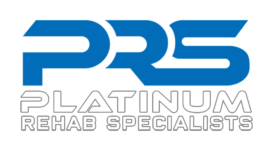How to Manage Achilles Tendinitis
What do I do with Achilles Tendinitis???
Overview:
Achilles tendinitis is no joke if you’ve ever experienced it! The pain usually comes on gradually and then suddenly there’s a day where you wake up and have excruciating pain that is very local to the Achilles tendon. Oddly enough, Achilles tendinitis is found in only 35% of sport related activity. This means the majority of people who have this diagnosis are everyday people. The cause is usually due to being sedentary and then having an overuse problem leading up to the first symptoms. In addition, the diagnosis is mainly found in people ranging from 41-60 years old. Age might be more suggestive than a true causation. From a basic physiological standpoint, all tendons need to have good stress and strain put through them so that they can maintain their resiliency time and time again. This is why ultimately it is not entirely up to age. It does play a key role when we are sedentary or inactive and then we try to be the kid we once were back in high school or college.
Signs and Symptoms:
The location of the pain is at the tendon to heel connection or along the Achilles tendon. In the very early stages, the pain can be really intense and your ability to walk, get up and down stairs, or run are usually very limited. As the condition continues on, intermittent pain is felt and most likely get worse in activity like working out, playing sports, or recreational activities like hiking. Another symptom would be having severe stiffness when waking up in the morning or when sedentary like sitting at a desk during work hours.
Management of Condition:
Most likely someone will see their primary care provider first due to age (41-60) and condition (sedentary) of people who are most likely to experience this condition. Then a subsequent referral will be made to an orthopedist or podiatrist to help diagnose the source of the pain or If you are a more active person, it would be best practice to see a performance rehab professional earlier rather than later. The true underlying cause of the condition is a tendon that is breaking down. Steroid injections, walking boots for 4-6 weeks, and “rest” are not plans to get your tendon better, it’s just a plan to help lessen some of the pain.
Do I need rehab?
Yes! You absolutely need rehab in these situations. Like stated above, the injections and other medical interventions you might receive are in a basic sense a bandaid. The typical person who fits the condition is older and sedentary which means getting general mobility back and some strength back into the tendon and calf muscles helps to improve the overall condition. A general stance to be less sedentary can continue to help prevent the condition from coming back.
If you’re an athlete or someone who maintains a very active lifestyle, then any down time is not ideal. Getting in with a performance physio early and often will help to improve your condition very quickly. Tendons still take time to heal depending on the tendon breakdown. Typically the 12 week protocol will resolve most symptoms and return the tendon to normal functioning without symptoms.
The protocol involves performing eccentric heel raises for 3 sets of 15 repetitions. Both feet are used in the heel raise portion and only the involved leg is used in the lowering phase. Heels hang off the back of a box or stair step to allow the heel to drop below the step or box. 3 sets are devoted to eccentric heel raises with a straight knee and 3 sets are devoted to 3 sets with a bent knee. This movement can start unweighted and then weight can be added as symptoms lessen and the exercise becomes easier.
Check out the YouTube video below to see how it’s done. You can also check out all other videos on my YouTube Channel
